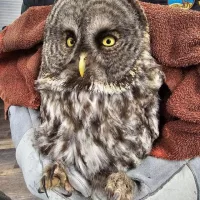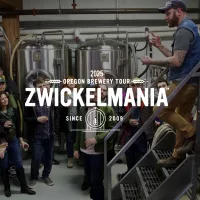
Vehicle collisions with deer and elk tend to peak in October and November, when migration and breeding puts them on the move, making them more likely to cross roads. Fewer daylight hours and rainy weather also reduce drivers’ visibility.
Each year, Oregon Department of Transportation crews remove about 6,000 carcasses of deer struck and killed by vehicles near Oregon’s public roadways, and many more die away from roads or on county, city or private roads.
Oregon Department of Fish and Wildlife research with GPS-collars show mule deer faithfully follow their migratory route, no matter how many roads or other obstacles get put in the way. They often have no choice but to cross roads to get to food and shelter.
- Some tips on avoiding wildlife collisions when driving:
- Animal crossings signs are placed in known crossing hotspots. Be on the lookout when you see one.
- Be alert in areas with dense vegetation along the road or while going around curves. Wildlife near the road may be hard to see.
- If you see one animal, stay alert because others are likely nearby.
- If you see an animal on or near the road, slow down and stay in your lane. Many serious crashes are the result of drivers losing control when they swerve.
- Always wear your seat belt. Even a minor collision could result in serious injuries.
- This is also the time of year when the most road killed deer and elk are salvaged for meat. If you hit a deer or elk (or see one that is struck) don’t forget, you must fill out a free permit and turn the head in within five days so ODFW can test for Chronic Wasting Disease. More info can be found here.
There are a few areas in Oregon where you may see less animals crossing the highway, thanks to wildlife under-crossings. Keeping animals off highways creates safer environments for animals and safer roads for travelers.
Oregon’s newest undercrossing was recently completed on U.S. 97 near Gilchrist. This was the first crossing that was paid for and built with help from many agencies, non-profits and volunteers. In recent years, the Oregon legislature has dedicated funds that support wildlife passage. Oregon Hunters Association, Oregon Wildlife Foundation, Oregon Department of Fish and Wildlife and many others have also been key partners in directly supporting wildlife passage projects. Projects like this wouldn’t be possible without support from partners across the state. To learn about how everyone came together to make this project happen, watch this video.
ODFW and ODOT are continuing to work to reduce wildlife-vehicle collisions and preserve long-term habitat connectivity for Oregon’s wildlife.
ODFW is working to finalize the state’s Wildlife Corridor Action Plan and recently released the Priority Wildlife Connectivity Areas map. This map has GIS spatial modeling for 54 different wildlife species to show where Oregon can invest to provide the greatest overall benefit for wildlife movement.
If you want to support wildlife passage, consider the Watch for Wildlife Oregon license plate. Proceeds from this plate fund wildlife passage and habitat connectivity projects statewide.















